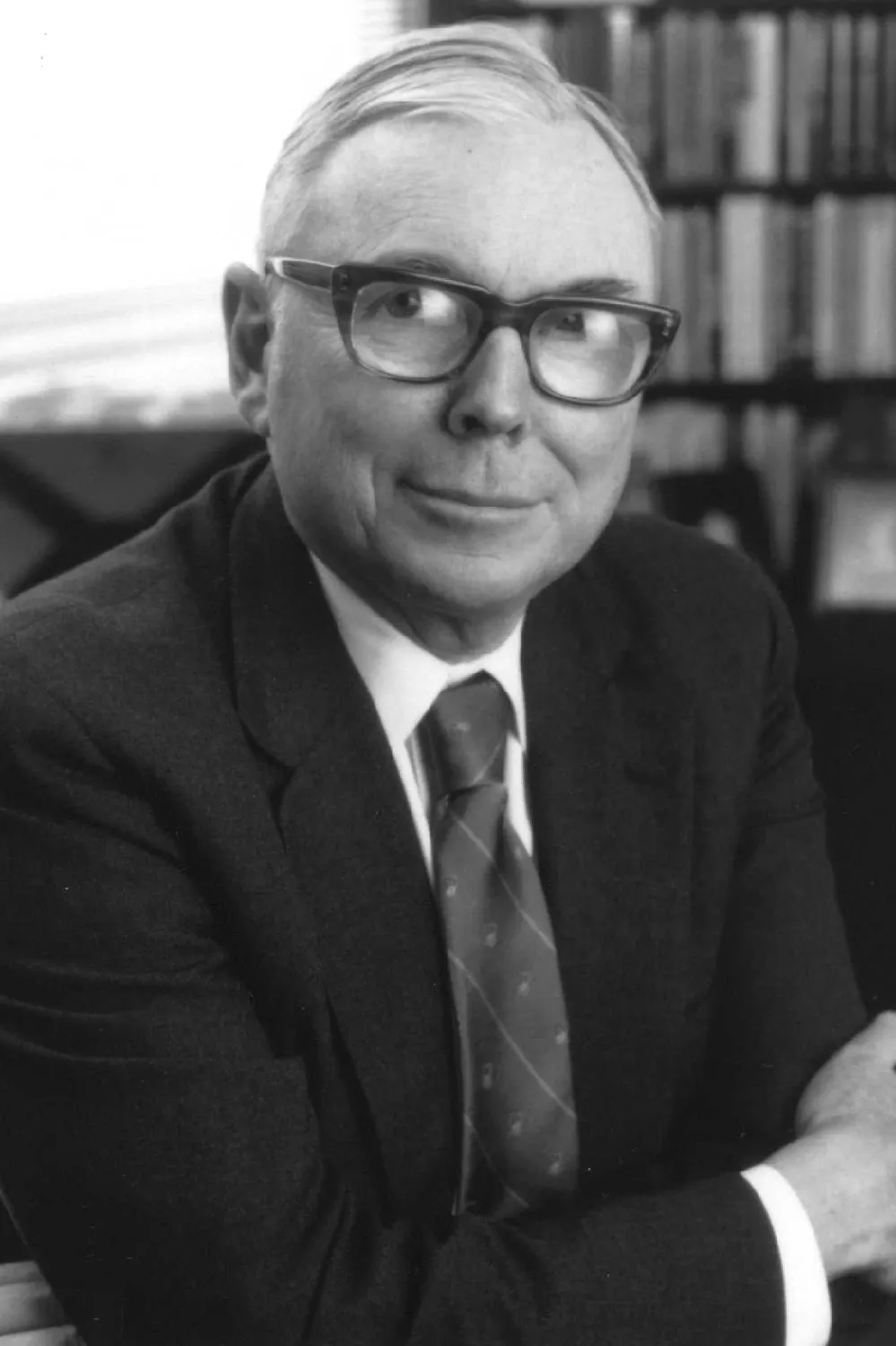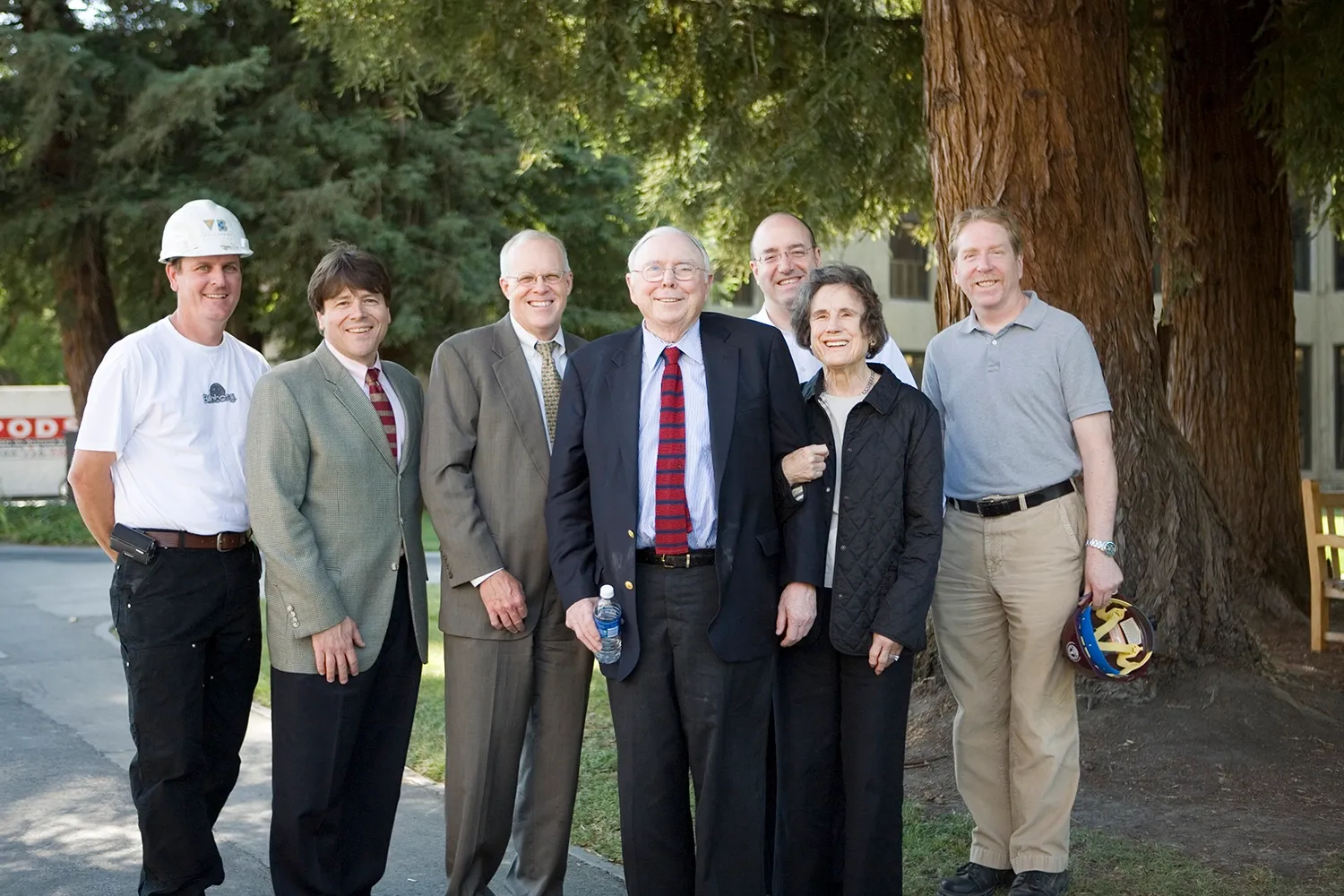/f/78141/2695x2021/d84e7cd685/munger-residence.jpg)
Renowned investor Charlie Munger, 99, changed Stanford graduate housing
His campus legacy includes the Munger Graduate Residences, which bring together students from across fields of study.
Investor, businessman, attorney, and philanthropist Charles (Charlie) Thomas Munger died on Tuesday, Nov. 28, at age 99. Nationally, Munger was best known as vice chairman of Berkshire Hathaway, where he worked alongside his friend Warren Buffett for almost five decades. At Stanford, he was known for his longtime service at the law school, quick wit, and incredible generosity.

Charles Munger
In 2004, he and his wife, former university trustee Nancy Munger, ’45, made a gift to construct the Charles and Nancy Munger Graduate Residence, a campus residential complex that houses graduate students from across the university. At the time, the gift was believed to be the largest individual gift ever given outright to an American law school, as well as the largest gift for Stanford student housing.
“I am deeply grateful to Charlie Munger for his remarkable commitment to Stanford,” said President Richard Saller. “Through his generous philanthropic support and his dedication as a volunteer and advisor, he had a profound impact on the lives of our students and faculty. In particular, his vision for the benefits of collaborative learning and residential education helped shape our vibrant campus environment. He leaves a legacy that will benefit the Stanford community for generations.”
Born in Omaha, Nebraska, in 1924, Munger was the son of a lawyer, Alfred Case Munger, and grandson of Thomas Charles Munger, a U.S. district court judge and state representative. As a teenager in Omaha, he worked at Buffett & Son, a grocery store owned by Warren Buffett’s grandfather. Munger attended the University of Michigan, served in the U.S. Army Air Corps., and received a JD in 1948 from Harvard Law School.
Munger married Stanford alumna Nancy Barry Borthwick in 1956. Both had been previously married and had young children. Of the eight children in their blended family, four would go on to earn Stanford undergraduate and/or law degrees: Wendy Munger, ’72, who is a former member of the university’s Board of Trustees; Charles Thomas Munger, Jr., ’79; Emilie Munger Ogden, ’81, JD ’89; and Barry Alfred Munger, ’84. Several grandchildren are also alums.
While not an alum himself, Munger’s legal background drew him into active involvement at Stanford Law School, where he served for decades on the Dean’s Strategic Council and the Law School Board of Visitors, and helped to launch the Law and Business Advisory Council. He became a trusted advisor to deans and many faculty members.
“Charlie Munger made such a difference through his support of the Law School,” said Provost Jenny Martinez, who worked with Munger as dean of Stanford Law School. “The Munger graduate residences were transformative for student life, helping foster deeper community and more academic and extracurricular engagement. He also supported so many other urgent needs over the years, from faculty to academic programs.”
Together, the Mungers were Stanford volunteers and champions. Nancy Munger, who died in 2010, devoted more than 30 years to volunteer leadership at Stanford and became one of few alumni to hold the Gold Spike Award, which honors distinguished longtime service to the university. Much of the couple’s philanthropy at Stanford was directed to the law school, where they created the Nancy and Charles Munger Professorship in Business. Other gifts were directed to Hoover Institution, Stanford Medicine, and the School of Humanities and Sciences. The Munger Rotunda in the Bing Wing of Green Library is also named for their generosity.
But the gift that most significantly changed the Stanford landscape was the Munger Graduate Residence, a five-building complex that houses more than 600 graduate students across disciplines adjacent to the law school’s campus. The objective was to build “a community that doesn’t exist yet in American education,” Charlie Munger said at the time. It did so by attracting graduate students from different fields of study – law, business, medicine, education, engineering, the sciences, and others – and promoting their interactions. “The education these students will give each other is probably every bit as important as the education the professors will give them,” he said.
In 2004, he sent an eight-page fax to the office of John L. Hennessy, then Stanford president, which explained in block capitals and freehand drawings various recommendations for the design, from the corridors to the “very extreme soundproofing,” four-bedroom suites to foster social life, and units to “allow comfortable use by conversation groups.”

Charlie Munger, center, during a construction site tour of the Munger Graduate Residences in 2008. From left to right: Rod Humble of Vance Brown Builders, Martin Shell, John Hennessy, Charlie Munger, Larry Kramer, Nancy Munger, and Mark Bonino. (Image credit: Misha Bruk)
“Charlie’s Fax,” as the document became known, would have been a credit to any professional architect. In fact, the finished buildings, which became fully occupied in the 2009-10 academic year, would bear a striking resemblance to his original sketches. The new residence won high praise from students as they moved in, with remarks like “the most beautiful student housing I’ve ever seen.”
“Charlie was brilliant and loved to tackle hard problems,” said Hennessy, who is the Shriram Family Director of the Knight-Hennessy Scholars Program as well as the James F. and Mary Lynn Gibbons Professor in the School of Engineering. “Building a new residence that both worked well for our students and achieved ‘Munger efficiency’ was the challenge we faced. As he reminded me several times while we worked together, I would like his ideas because ‘I was smart, and he was right!’ In the end, we came up with a design that achieved both our goals of student satisfaction and efficiency.”
Munger was well known at Stanford, and elsewhere, for his quips, quotes, and one-liners. He dispensed advice in a book titled Poor Charlie’s Almanack, in a nod to Benjamin Franklin’s most famous work.
“Charlie was a real character and could be a force of nature: a magnitude 9.0 earthquake, category 5 hurricane, and a thousand-year flood, all rolled into one,” said Joseph A. Grundfest, the emeritus William A. Franke Professor of Law and Business, who was both a friend and colleague. “He was also generous and thoughtful beyond belief. The dormitories he contributed to Stanford, now affectionately known as Mungerville, transformed the culture of Stanford’s graduate community in a profound and very beneficial way.”